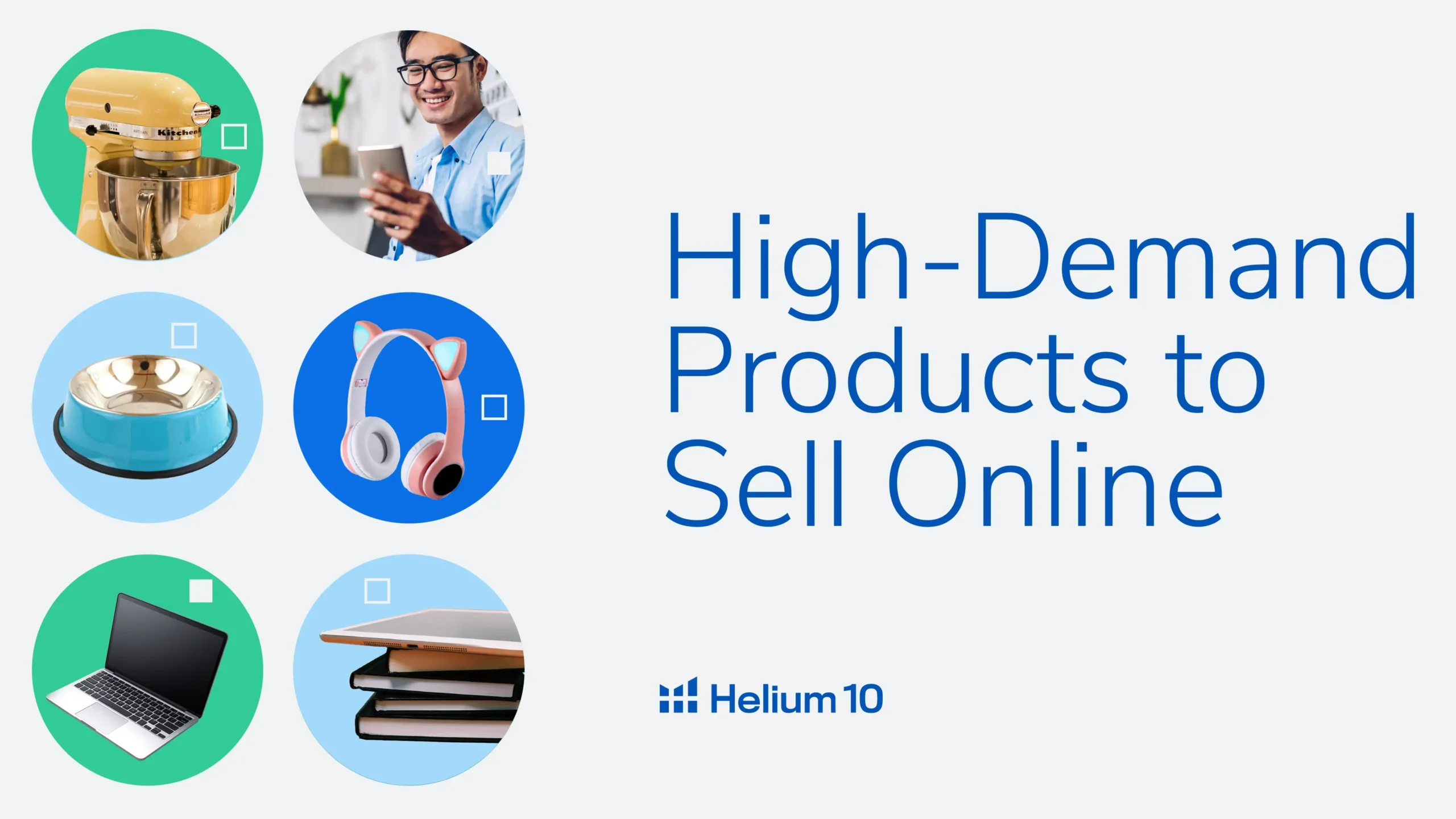
5 High-Demand Products to Sell 🤑


Table of Contents
- Introduction
- How to Find High-Demand Products & Categories
- Which Product Categories Are in High Demand?
- Which Products Are in High Demand?
- #1 Sleepsack Wearable Blanket
- #2 Velvet Ribbon
- #3 Infant Stroller Warmmuffs
- #4 Wide Baby Gate
- #5 Bamboo Sleeping Bag
- Conclusion
Introduction
With a rich tapestry of experiences woven through extensive client interactions and hands-on involvement since I first began selling on Amazon in 2019, I’ve had the privilege of offering strategic guidance to tens of thousands of sellers across all levels – from novices to well-established enterprises consistently generating seven and eight-digit revenues.
If there is anything I have learned, it is how to spot an in-demand product that has the potential to sell well given the right execution.
In this article, we’ll jump into a conversation about how you can begin selling high-demand products to jumpstart your own e-commerce store full of high-quality products that have the potential to go viral on social media platforms.

Outclass Your Competitors
Achieve More Results in Less Time
Maximize your results and drive success faster with Helium 10’s full suite of Amazon and Walmart solutions.
Sign Up for FreeHow to Find High-Demand Products & Categories
The fastest and easiest way to discover high-demand products to sell is through the help of a software tool like BlackBox from Helium 10.
I know. I sound ridiculously biased. Thank you.
BUT it’s true and I speak from experience having launched my first product after trying to locate a product manually by using Amazon Best Sellers lists.
Full disclosure. That was a fail.
This contrasts with using a tool like BlackBox that can help you comb through Amazon data quickly and sort by criteria that help you best define opportunity.
You can take the second product I launched after starting to use the tool as proof of that. That ONE product helped me generate nearly $30,000 the first week of launching on track to six figures in the span of 1-2 months time. And yes, the profit margins are amazing.
So with that said, are you wondering how can you use BlackBox?
I encourage you to use the Products or Keywords tab.
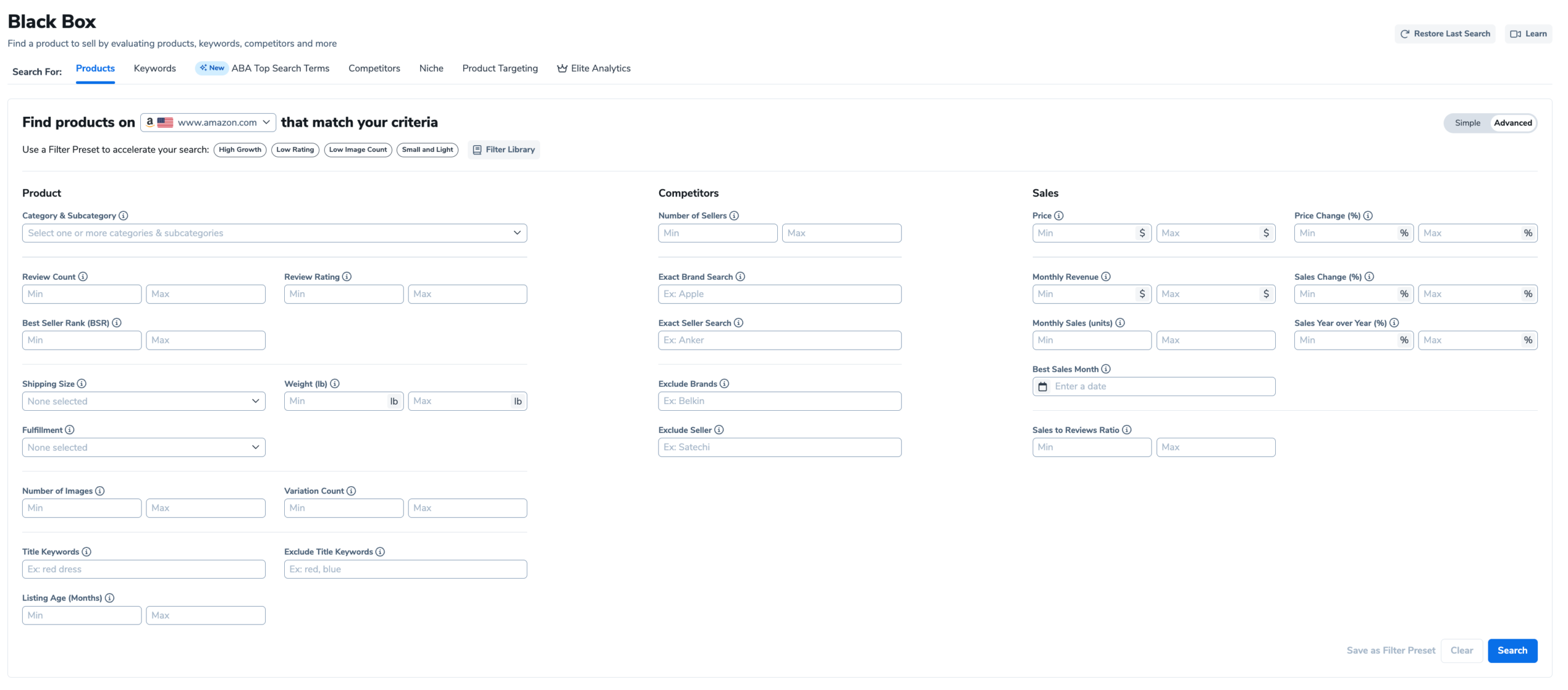
The products tab will output product listing pages like this one as a result back to you.
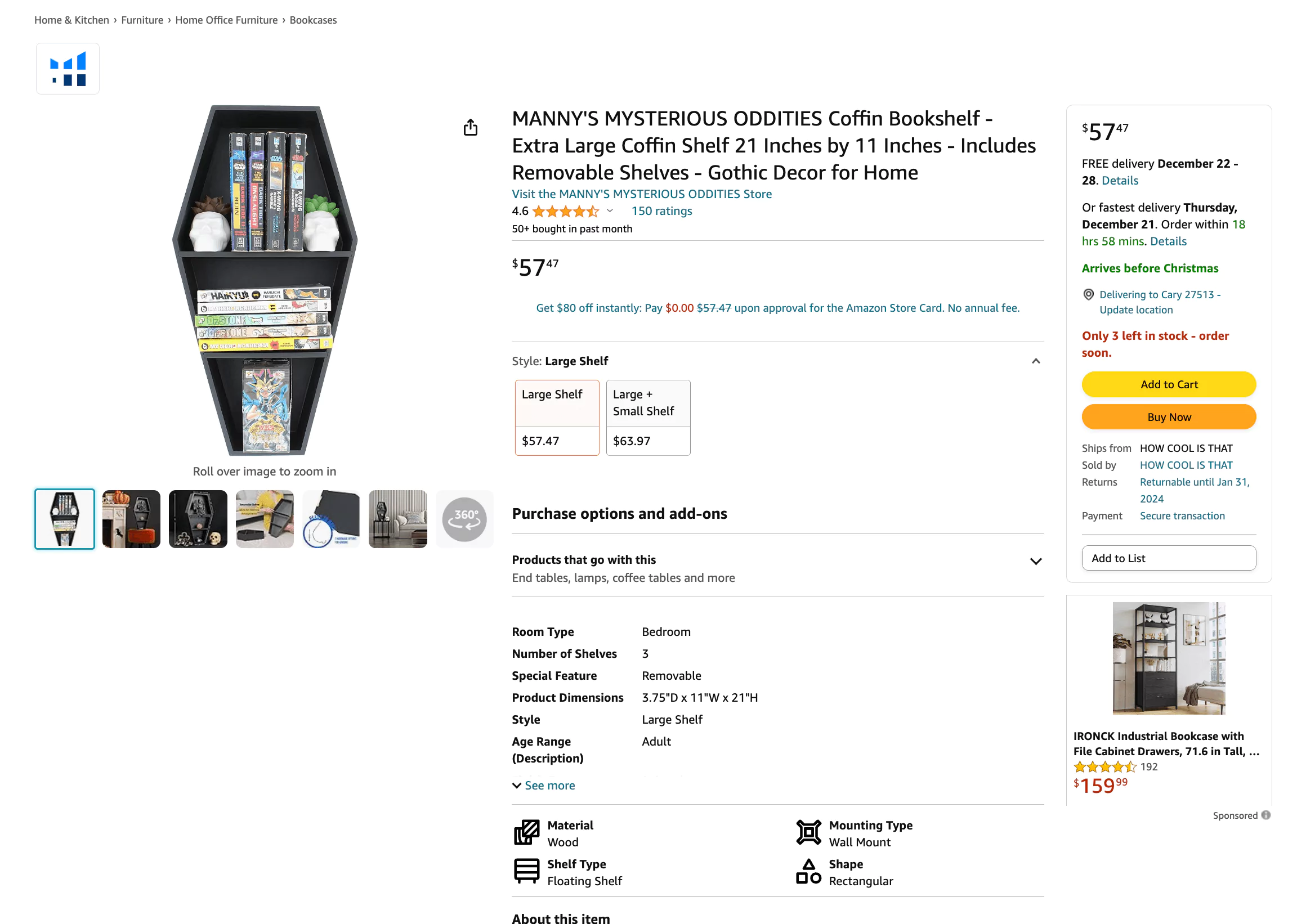
Whereas the Keywords tab will offer you search terms such as “coffin shelf.”
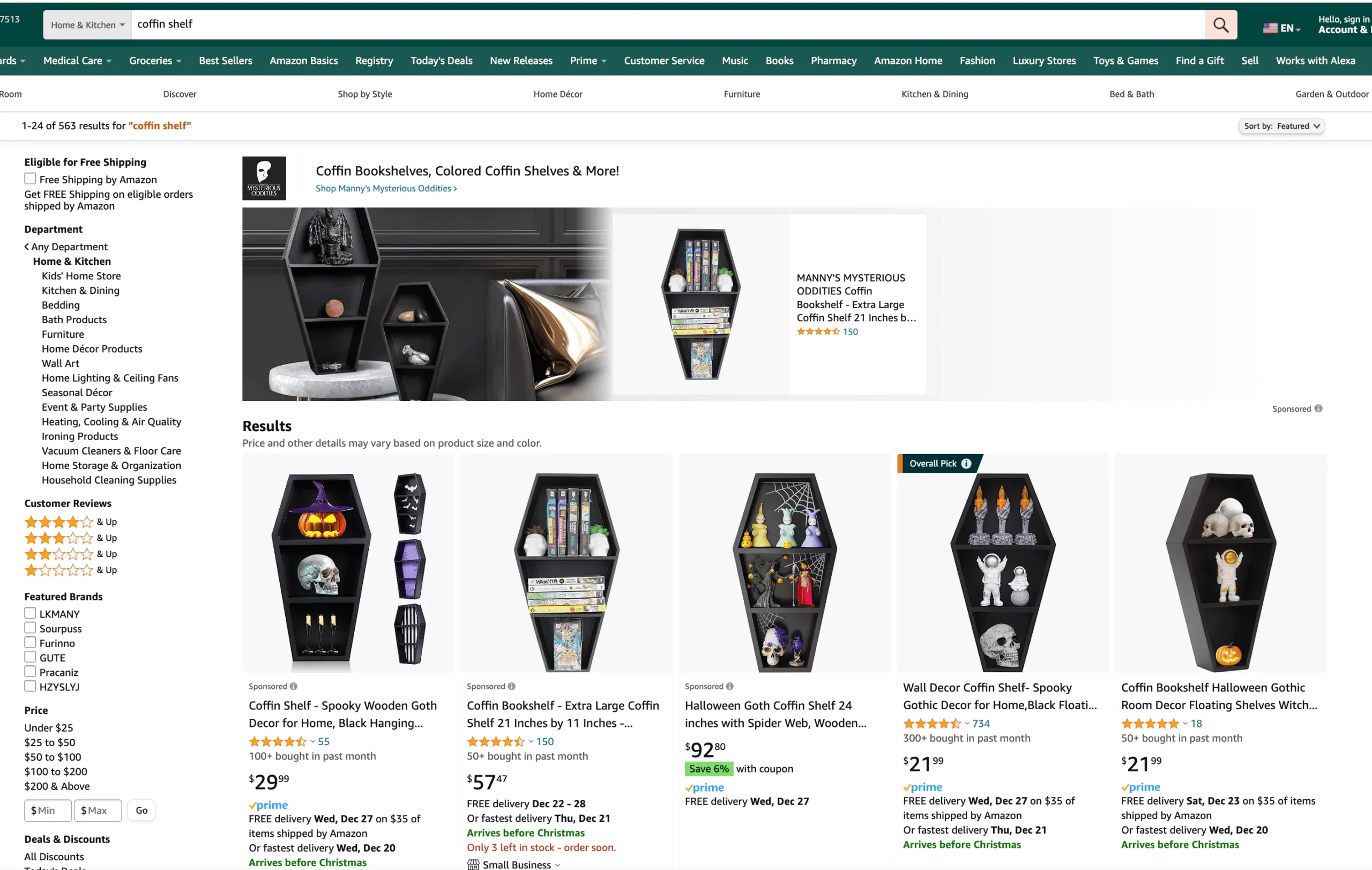
The keywords tab is brilliant for studying niches allowing you to understand whether you would be able to capture sales once you have a product up and listed on Amazon. It answers “Can my product stack up to the competition?”
Since you will naturally begin with 0 reviews when you first list your newly sourced and branded product, you must either differentiate your product enough to capture market share and win on price, or the market will need to be in sufficient demand for you to “win.”
There are many filters provided inside of BlackBox to help you gauge that.
While there are no right or wrong filters you should use to select a product, you can use them to begin creating a shortlist of product ideas.
Use filters like the search volume, monthly revenue, word count, categories, title density, and review competitors to narrow your pool of potential ideas based on demand.
If you do not know what any of those are, here is a glossary of what those terms mean:
Search Volume: Search volume represents how often users search for a particular keyword on Amazon.
Monthly Revenue: This is the total sales generated by products related to the keyword on a monthly basis. This filter helps you identify keywords associated with products with a specific revenue range so you know people are willing to spend for it.
Review Count: The number of reviews that products related to the keyword have received. This filter assists in evaluating the competitiveness and market acceptance of products.
Word Count: Allows you to specify the number of words in the keyword phrase. This filter can help you target more specific or longer-tail keywords.
Categories: Enables you to filter products by specific Amazon categories, helping you narrow down your search to a particular niche or industry.
Title Density: This metric measures how well the keyword is utilized in the titles of products. Higher title density indicates that the keyword is more prominently featured in product titles.
Competitor Review: The average number of reviews received by competitors offering products related to the keyword. This provides insights into the competitive landscape and customer feedback.
Which Product Categories Are in High Demand?
Demand changes as the seasons do.
According to Google Trends, some of the top categories are: Clothing, Beauty Products (i.e. Skincare), Fitness Equipment, Matcha, Pet Supplies (i.e. Dog Toys), Baby Products (i.e. Shirts), Consumer Electronics, Home Decor, Fashion Accessories, Toys and Games, CBD Products, and Home and Kitchen Appliances
But remember, a category would not exist if at least one person did not have a necessity for it.
It is good practice to run multiple searches with BlackBox so feel free to keep the category limitations as broad or narrow as you would like. The only caveat is that certain categories may require a larger upfront investment capital (ex. large furniture, in-home decor, or electronic items) and may have restrictions. You can avoid these restricted products, restricted categories, and restricted brands on Amazon for a smoother selling experience.
Which Products Are in High Demand?
The demand within categories also ebb and flow.
Let’s do a sample search using BlackBox inside of a given category.
I would open up the Products tab of BlackBox. Say I was interested in the Arts, Crafts & Sewing niche as well as the Baby Products niche. I would select both from the “Category & Subcategory” filter before utilizing some of the other filters to find trending products online.
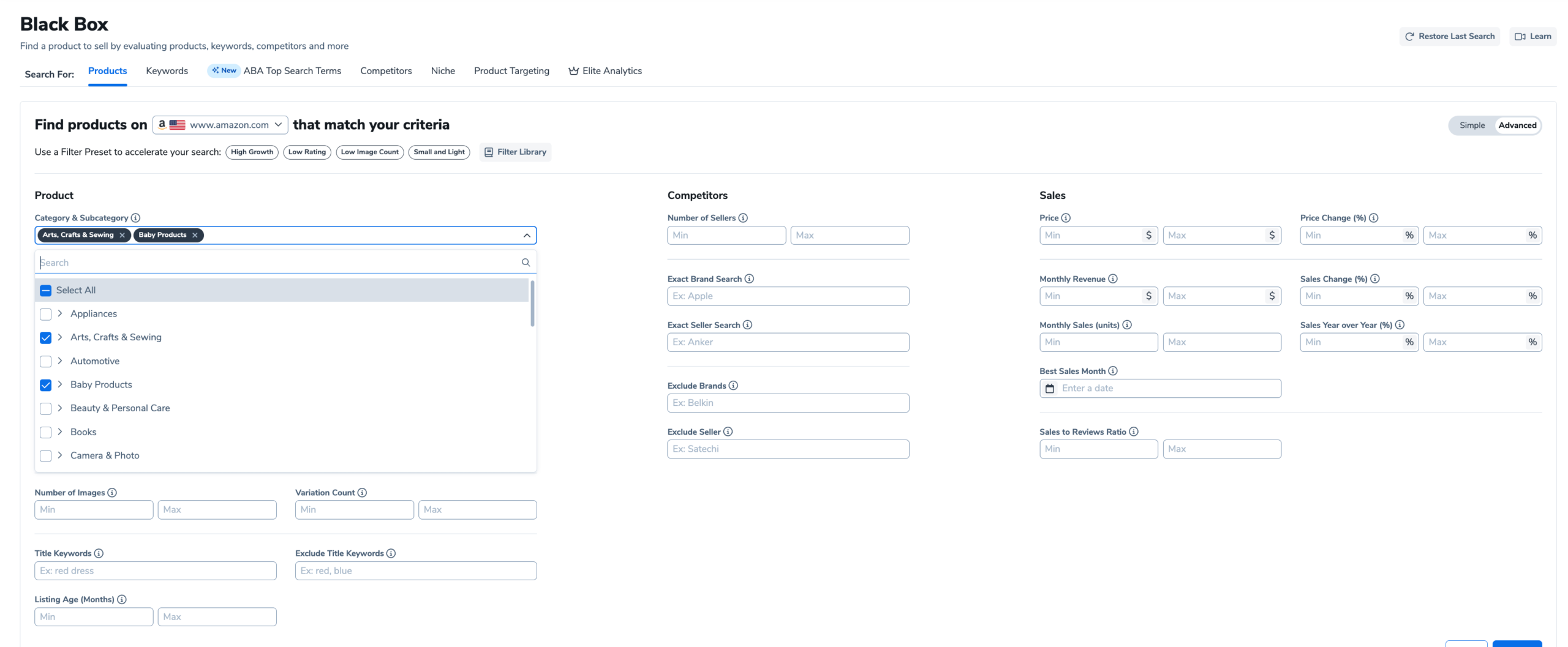
There is not a one-size-fits-all approach to discovering trending e-commerce products but you could use filters like a minimum of “monthly revenue” alongside “monthly sales (units)” to identify any products that are moving large volume.
Now, make note that this does not necessarily mean you want to sell that product. You will still need to validate that there is an opportunity for you to capture a piece of the pie before sourcing. However, it can be a good place to begin.
I am going to input a minimum monthly revenue of $60,000, a minimum monthly sales of 600, a maximum of three images, and a maximum of two sellers to narrow down to only private label products.
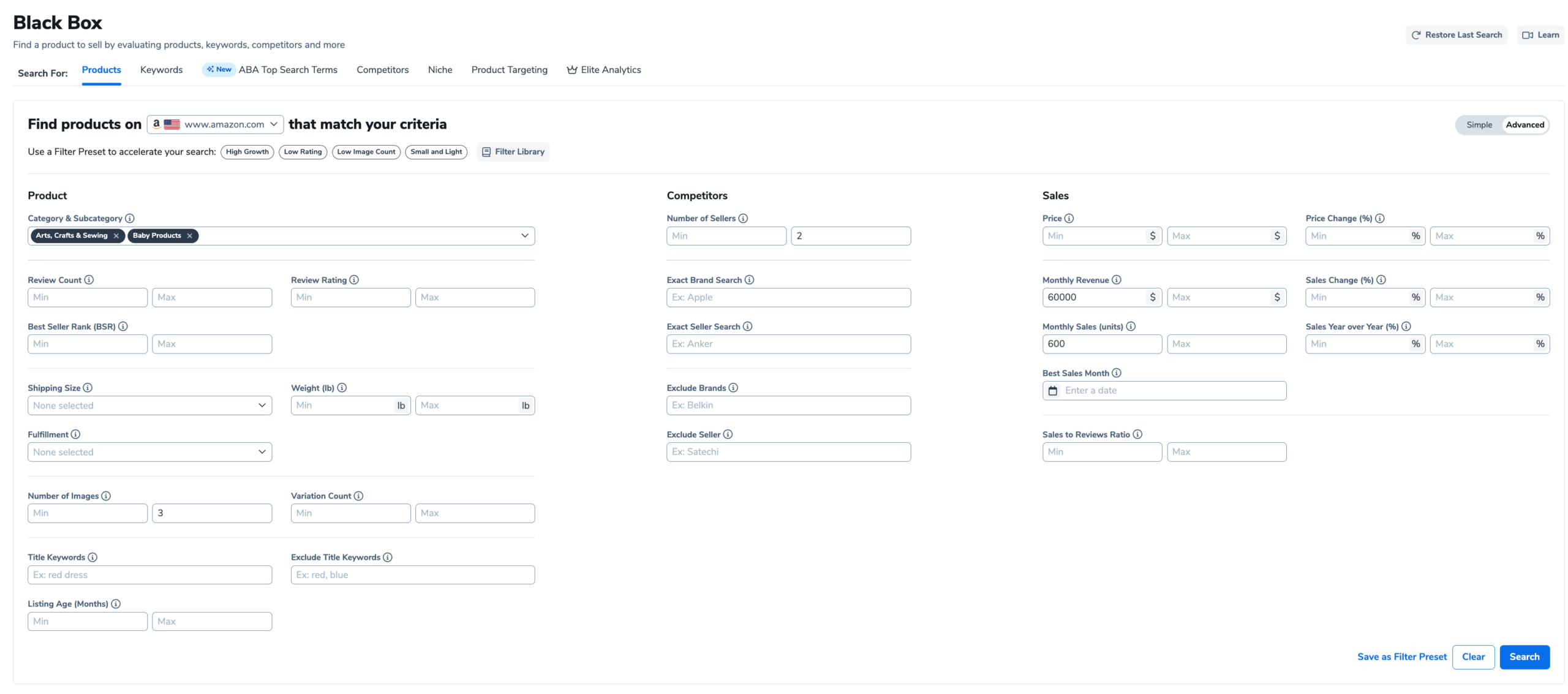
We received 500 outputs.
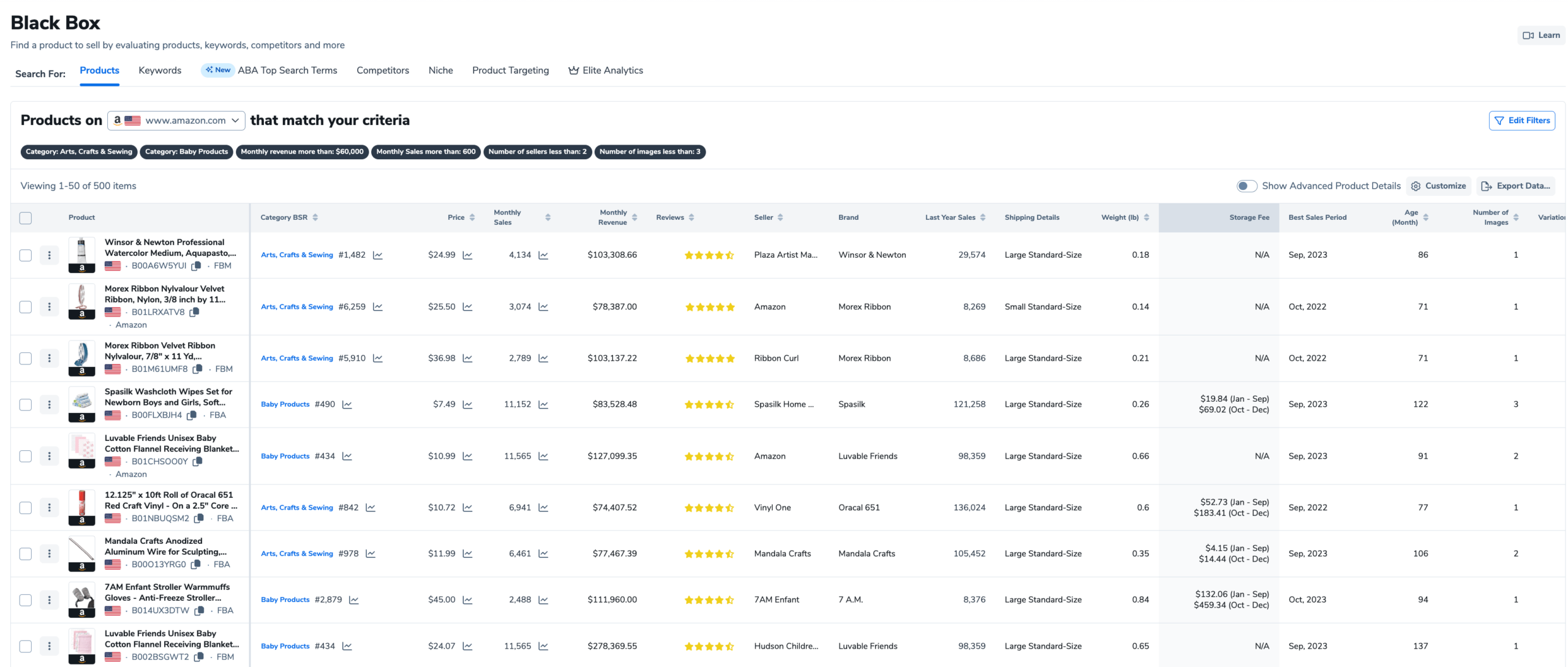
I went back in and added a minimum of $25 for retail pricing. Here are some outputs we received.
These could potentially be products that you could sell effectively, even without an established brand, though building a brand is where a lot of value is long-term.
#1 Sleepsack Wearable Blanket
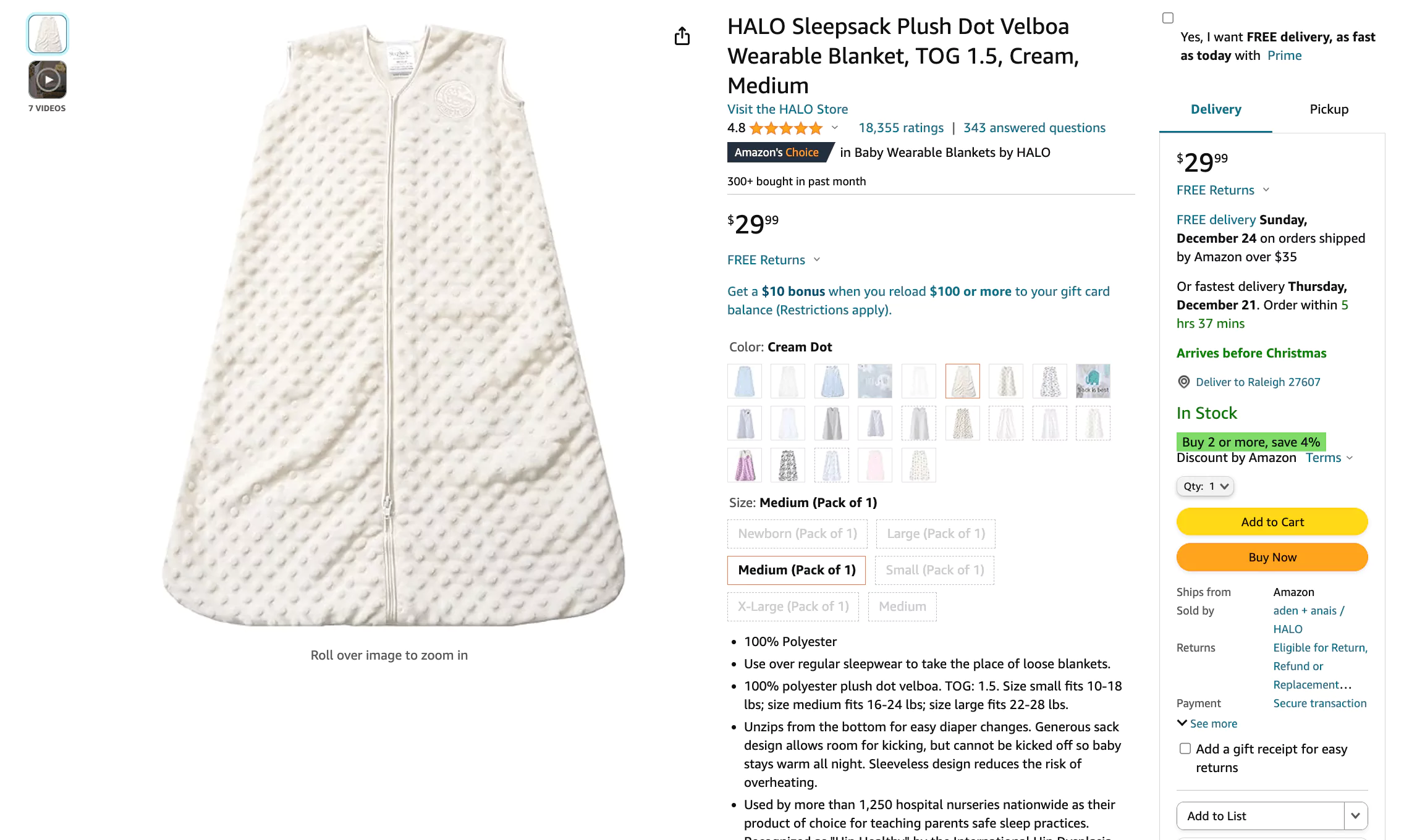
This wearable vest-style blanket is being searched up and sold approximately 12,400 times on average per month and generates a monthly revenue of nearly $370,000. The image section is not even being fully utilized which could be a marker of opportunity suggesting if we create a better listing, perhaps some of that revenue could be ours given we create a quality product with low sourcing costs and that there are not too many competitors.
#2 Velvet Ribbon
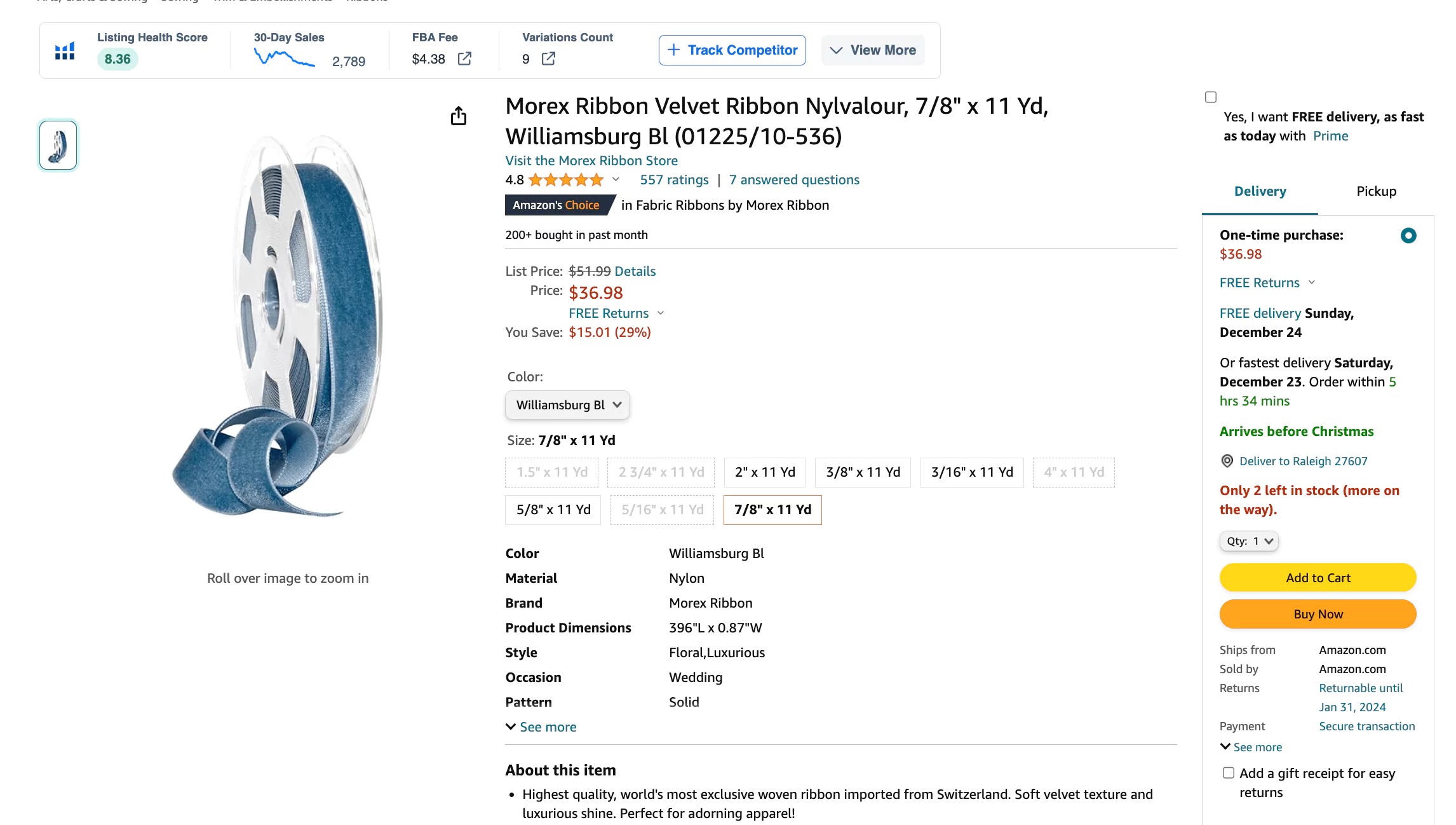
Sitting at 2,700 monthly unit sales and $103,137 monthly revenue, this velvet ribbon goes for $37 sourced for what looks like pennies on Alibaba.
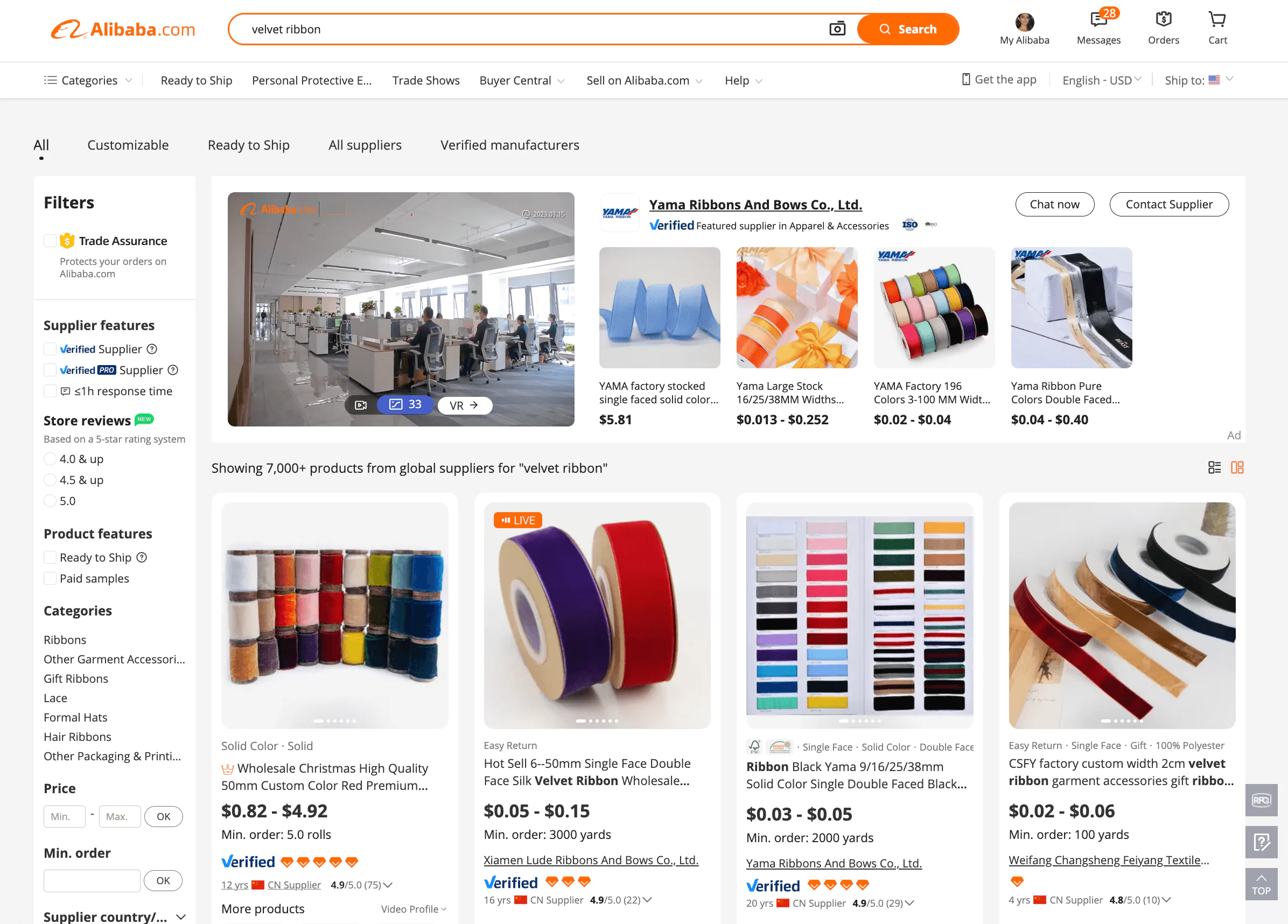
Considering perhaps you want to create a nice logo for the beginning portion of the ribbon and place it in a nice box, seeing if you can throw in a free item to help someone sew, you can use the Helium 10 Profitability Calculator to see what it might give you in terms of net profit if you decided to venture into this market.
#3 Infant Stroller Warmmuffs
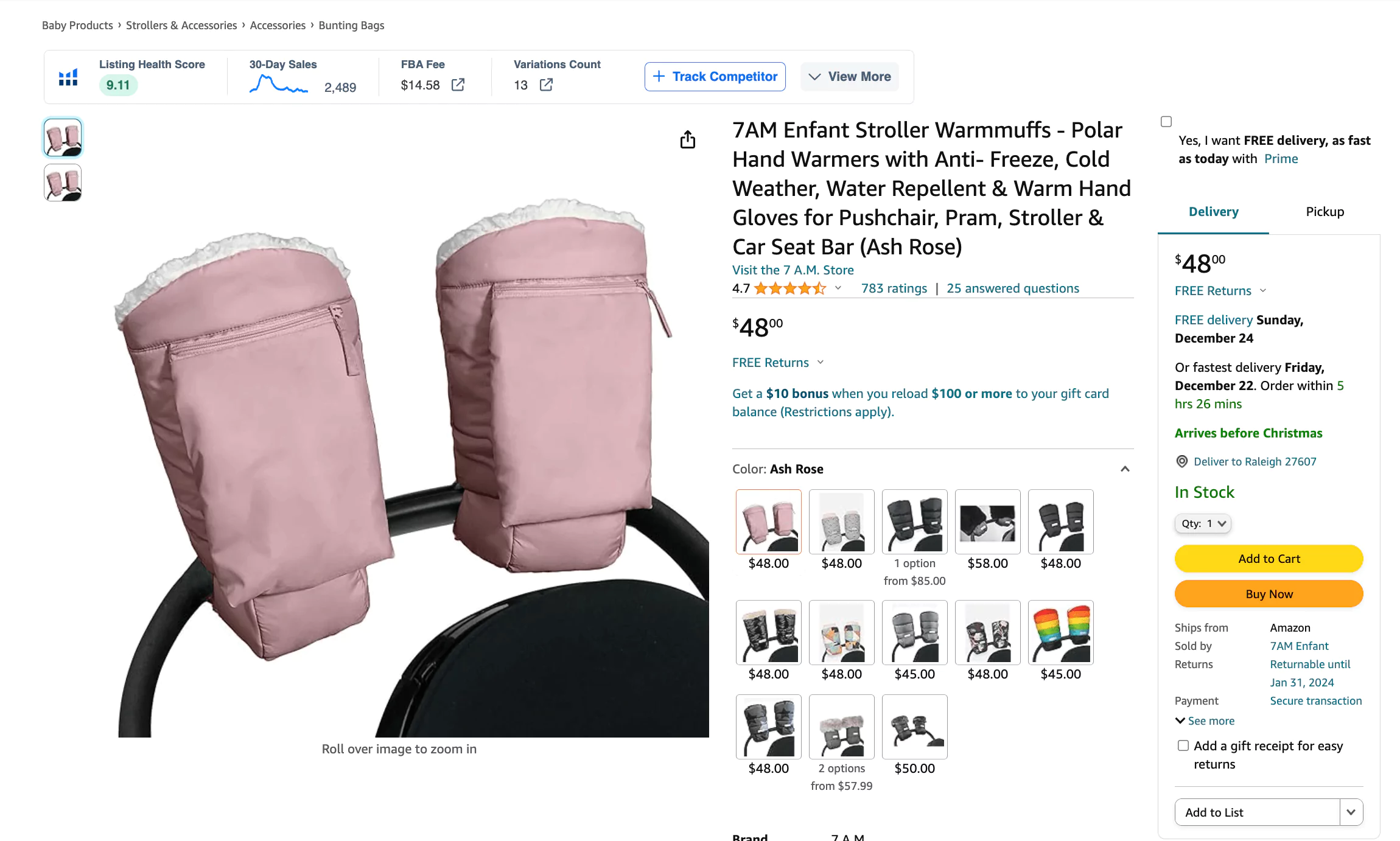
Then, in the baby niche, we have these infant stroller hand muffs. With only two images and the title not even being spelled correctly in the title being more likely a keyword or phrase the seller is trying to rank for, this product still generates $111,000 monthly. Upwards of 2,400 people are purchasing it though, in this case, you may need to consider that this product sells better in colder seasons.
If you wish to opt for something specifically for the Q3 and Q4 season, this could do well. Perhaps you want to save it to consider for next year. However, if not, then you could rule this out as an option.

#4 Wide Baby Gate
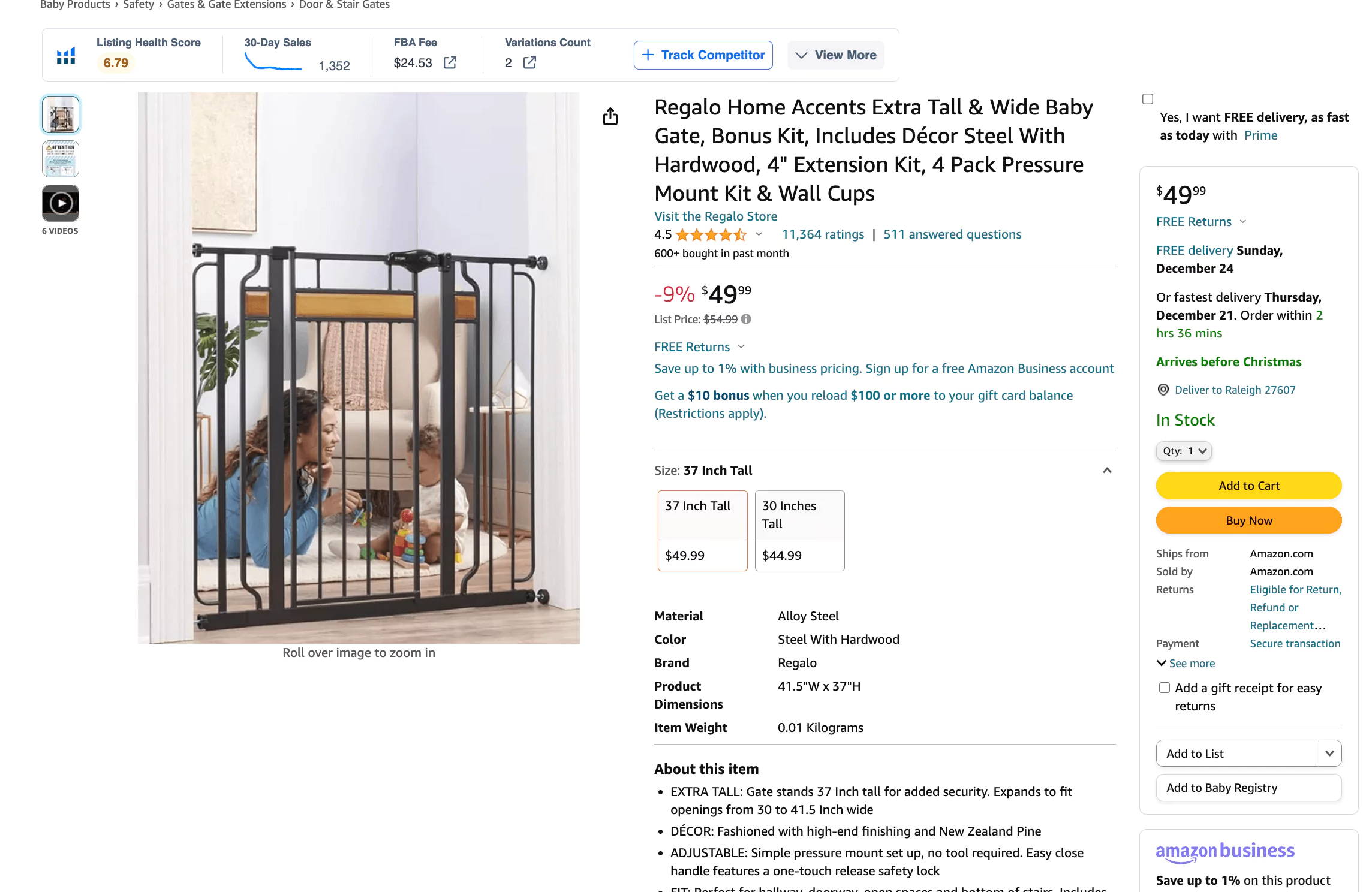
Next up, there is this extra tall and wide baby gate made from steel and hardwood. Charging a hefty $24 fee from their $50 price point, the materials are also heavy meaning a potentially higher sourcing pricepoint. The monthly moving volume is roughly 1.5K and revenue rakes in at 70K.
Whether this is something you would want to shortlist as a product idea may be dependent on what value you could add to the market by duplicating something like this while taking a closer look at metrics to understand whether you will be cash-flow positive.
#5 Bamboo Sleeping Bag
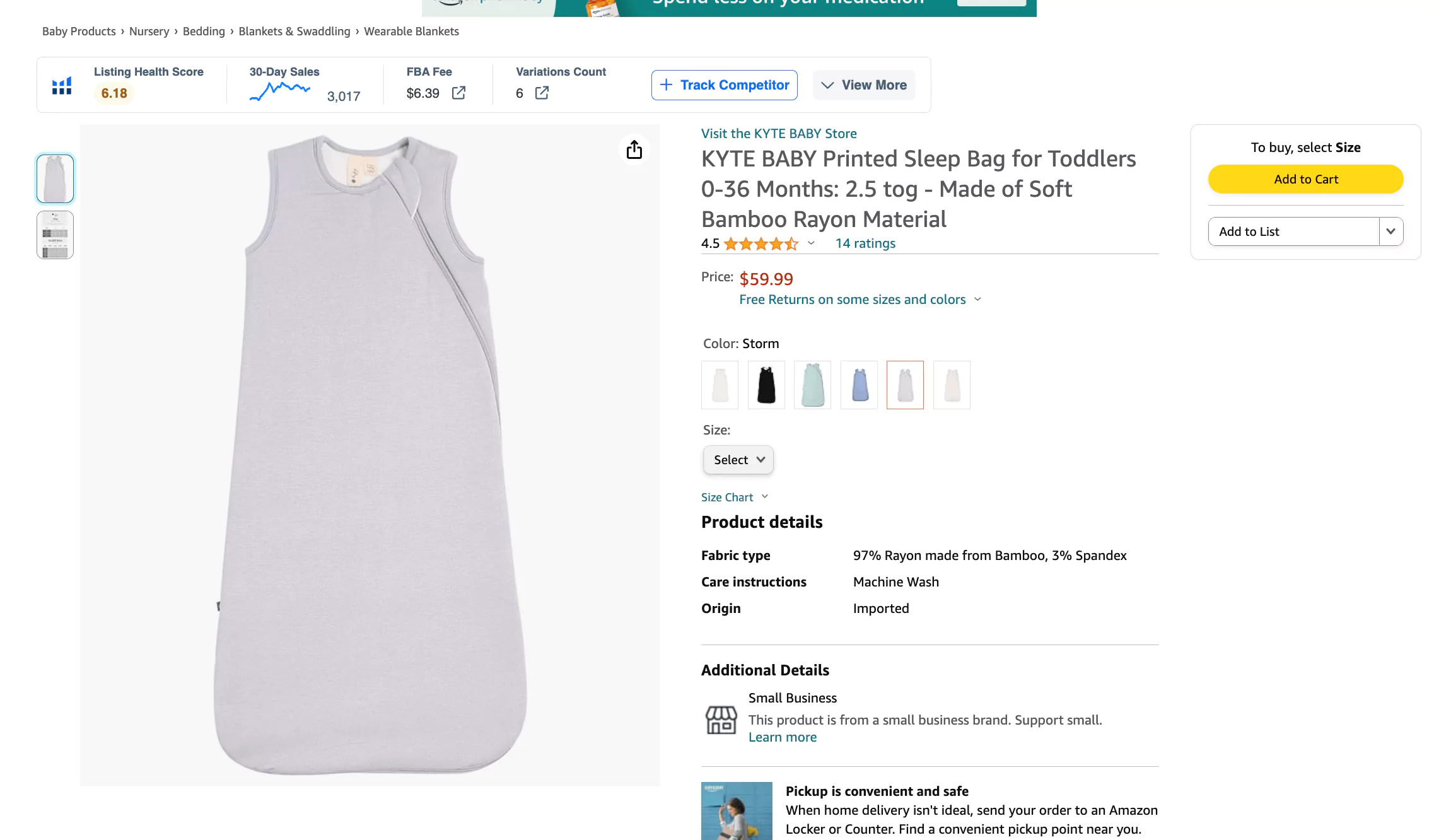
How this product shown here generates $177K per month with an unoptimized listing is impressive.
The fifth and final high-demand product I am showcasing to you is a printed sleep bag for toddlers. No buy button on the site, and no lifestyle or sizing comparison images. This online business centered on the clothing industry could be something duplicated, enhanced, and perhaps combined with influencer marketing or other sales channels to reach a more prominent target audience.
Conclusion
This is all to say that there is a plethora of opportunities you can tap into as a new or expanding Amazon seller.
Though whether or not you have consistently high profit margins or a profitable business will depend solely on you and the products you select, you can find more confidence in your decisions by taking your time in considering established sales data of the products available in online stores already.
Choose carefully. Faster sales cycles and consistent demand may also demand larger capital.
Make sure to weigh the trending niches, validate using consumer preferences, check online sales history, and define your competitive advantage. Perhaps your take on the fashion industry will be different from your input on the home office equipment market. Or your output to the global smartphone market may vary from what you offer to the global gaming console market, snack food, coffee industry, or wellness industry.
The beauty is it really depends on you. Good luck!
Frequently Asked Questions
Achieve More Results in Less Time
Accelerate the Growth of Your Business, Brand or Agency
Maximize your results and drive success faster with Helium 10’s full suite of Amazon and Walmart solutions.

